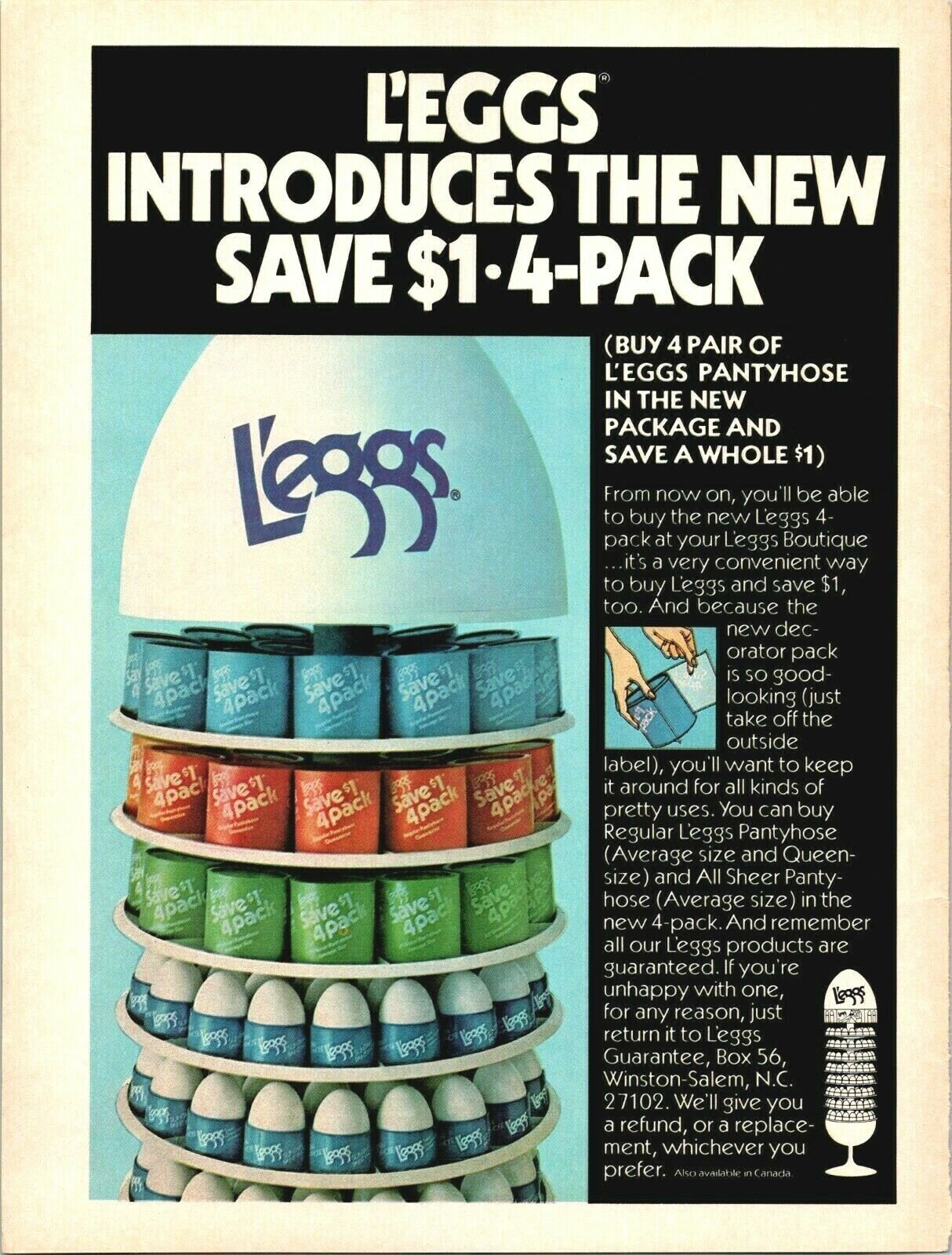The History of L’eggs Pantyhose
L’eggs Pantyhose is one of the most iconic and recognizable brands in the world of hosiery. The brand has been around for over 50 years, and during that time, it has become a staple in women's wardrobes around the world. In this blog post, we will explore the history of Leggs Pantyhose, from its origins to its current status as a leading brand in the hosiery industry.
Origins of L’eggs Pantyhose
L’eggs Pantyhose was first introduced in the United States in 1969. At the time, stockings were the most popular form of hosiery for women. However, they had several drawbacks. Stockings required a garter belt or suspender to hold them up, which could be uncomfortable and impractical. Stockings also tended to run easily, which meant that women often had to replace them after just a few wears.
The introduction of pantyhose was a game-changer for the hosiery industry. Pantyhose combined the convenience of stockings with the coverage of panties. With pantyhose, women no longer needed a garter belt or suspender to hold up their hosiery. They also no longer had to worry about their stockings running.
L’eggs Pantyhose was one of the first brands to enter the pantyhose market. The brand was created by Hanes Hosiery, a company that had been producing stockings since the 1920s. L’eggs Pantyhose was initially marketed as a more affordable alternative to other pantyhose brands on the market.
In the early years, L’eggs Pantyhose was marketed primarily to working-class women. The brand's advertising campaigns featured women in office jobs, wearing pantyhose to work. The brand's slogan, "Nothing beats a great pair of L'eggs," became a popular catchphrase.
Leggs Pantyhose in the 1970s
During the 1970s, L’eggs Pantyhose continued to grow in popularity. The brand expanded its product line to include a wider range of colors and styles. L’eggs also began to experiment with different packaging options.
One of the brand's most successful packaging innovations was the L'eggs Egg. The L'eggs Egg was a plastic container designed to resemble an egg. Inside the egg, customers would find a pair of L’eggs Pantyhose. The egg was not only practical, but it was also a fun and unique way to package hosiery.
The L'eggs Egg became an iconic symbol of the L’eggs Pantyhose brand. The egg was featured in the brand's advertising campaigns, and it was often used as a promotional item. Customers could collect L'eggs Eggs and use them for storage or decoration.
L’eggs also capitalized on the trend of celebrity endorsements. In the 1970s, the company signed a deal with Juliet Prowse, a British actress, dancer, and singer who gained fame in the 1950s and 1960s. She was known for her talent as a performer, as well as her striking beauty and charismatic personality. In 1978, Prowse became the face of L’eggs pantyhose, starring in a series of commercials that helped to revitalize the brand's marketing strategy and increase sales.
Leggs Pantyhose in the 1980s
In the 1980s, L’eggs Pantyhose faced increased competition from other hosiery brands. To stay ahead of the competition, L’eggs began to focus on innovation and quality.
One of the brand's most successful innovations during this time was the introduction of the L'eggs Sheer Energy line. The L'eggs Sheer Energy line was designed to provide extra support and energy to the legs. The pantyhose were made with a special fiber blend that was designed to improve circulation and reduce fatigue.
The L'eggs Sheer Energy line was a huge success. The line helped to establish L’eggs Pantyhose as a leader in the hosiery industry. The brand continued to expand its product line, introducing new colors and styles to meet the needs of its customers.
L’eggs Pantyhose in the 1990s and Beyond
Despite their early success, L’eggs pantyhose began to decline in popularity in the 1990s. One of the main reasons for the decline of pantyhose in general, including L’eggs, was the rise of casual dress codes in the workplace. As more and more companies adopted casual dress policies, women began to wear pants and skirts without stockings or pantyhose. The shift towards more relaxed clothing options meant that there was less demand for traditional hosiery.
Another factor was the rise of new materials and fabrics that offered more comfort and flexibility than traditional nylon and spandex. Lycra, for example, was introduced in the 1980s and quickly became a popular alternative to pantyhose. Microfiber and other synthetic fabrics also became increasingly popular in the 1990s, as they provided greater comfort and breathability than traditional hosiery materials.
Additionally, the rise of bare legs and tights as fashion statements also played a role in the decline of pantyhose. In the 1990s, it became fashionable to wear sheer or patterned tights with skirts and dresses, or to go completely bare-legged. As a result, many women began to forego pantyhose altogether.
Finally, changes in marketing and advertising also contributed to the decline of L’eggs pantyhose. As the company struggled to compete with newer, trendier brands, their marketing campaigns became less effective, and they were unable to maintain their place in the market.
The decline of pantyhose in general during the 1990s can be attributed to a combination of changing fashion trends, advancements in technology, and shifts in marketing and advertising strategies. While the brand still exists today, it is no longer as popular as it once was and has been overshadowed by newer, more innovative hosiery brands.
While the pantyhose market has diminished since the glory days, L’eggs are still available in most major supermarkets. The plastic egg-shaped containers were replaced with a cardboard box to be more environmentally friendly. However, the plastic eggs are occasionally brought back for special events and anniversaries.

